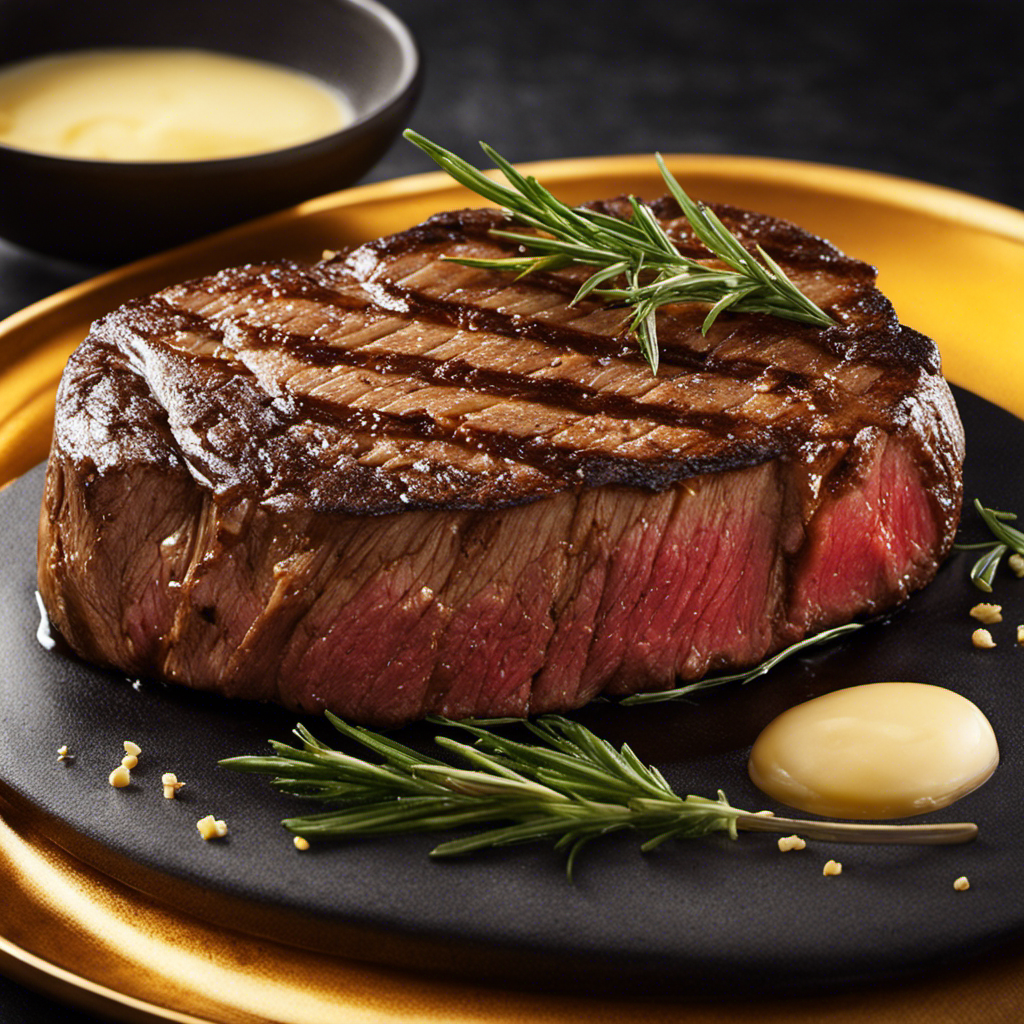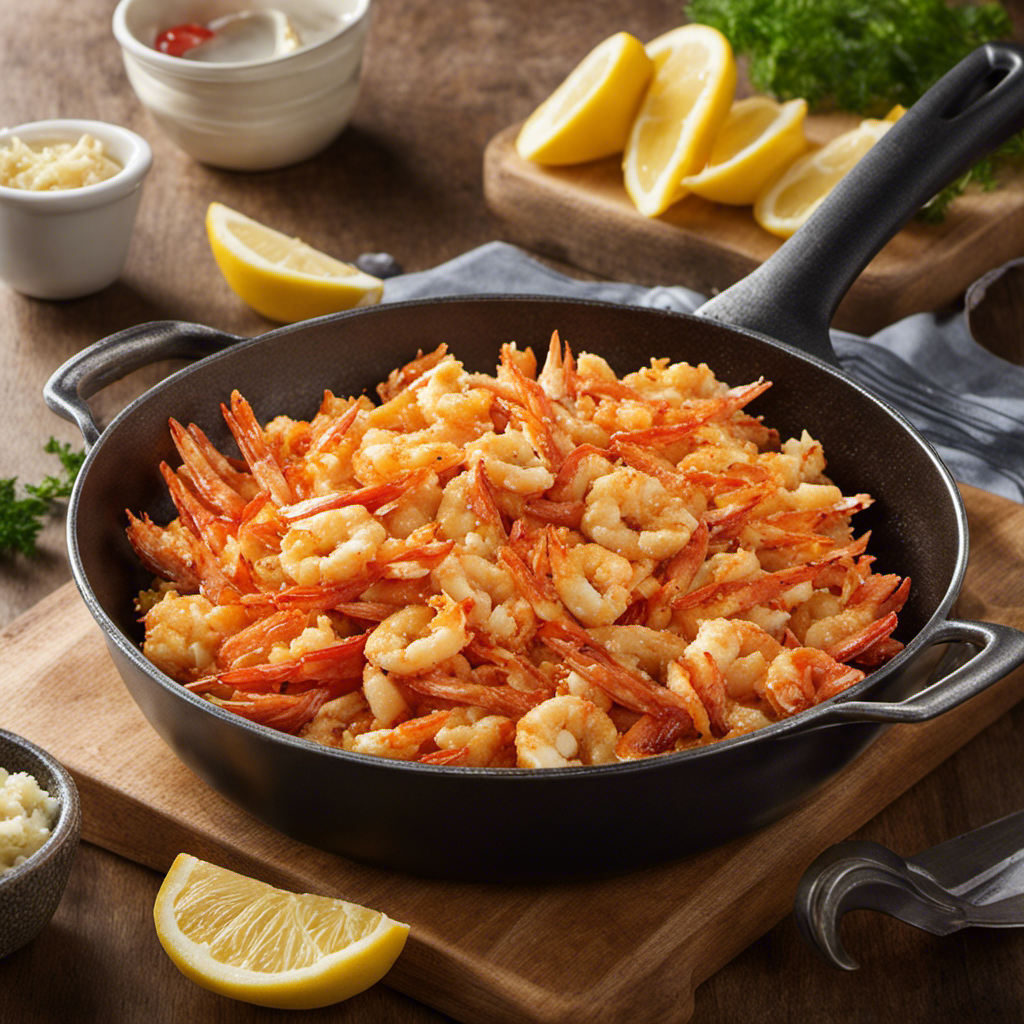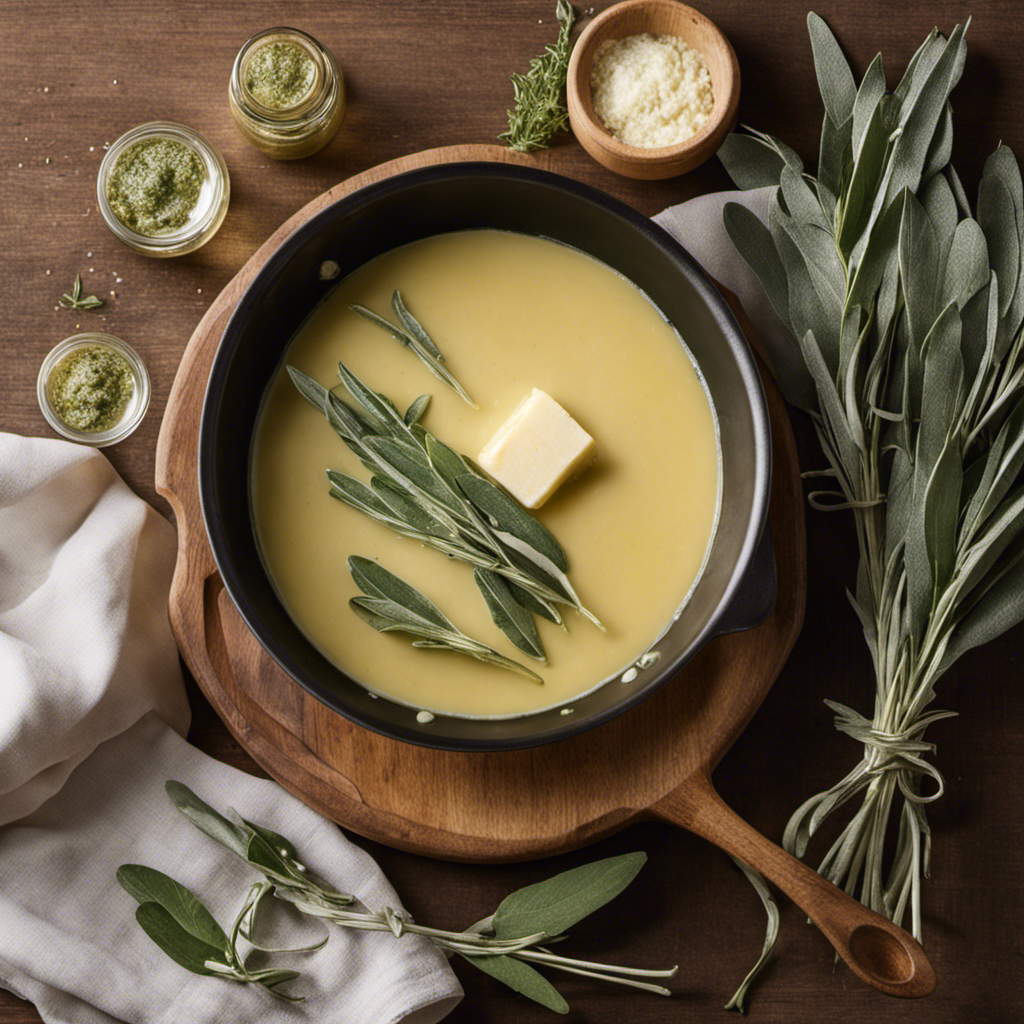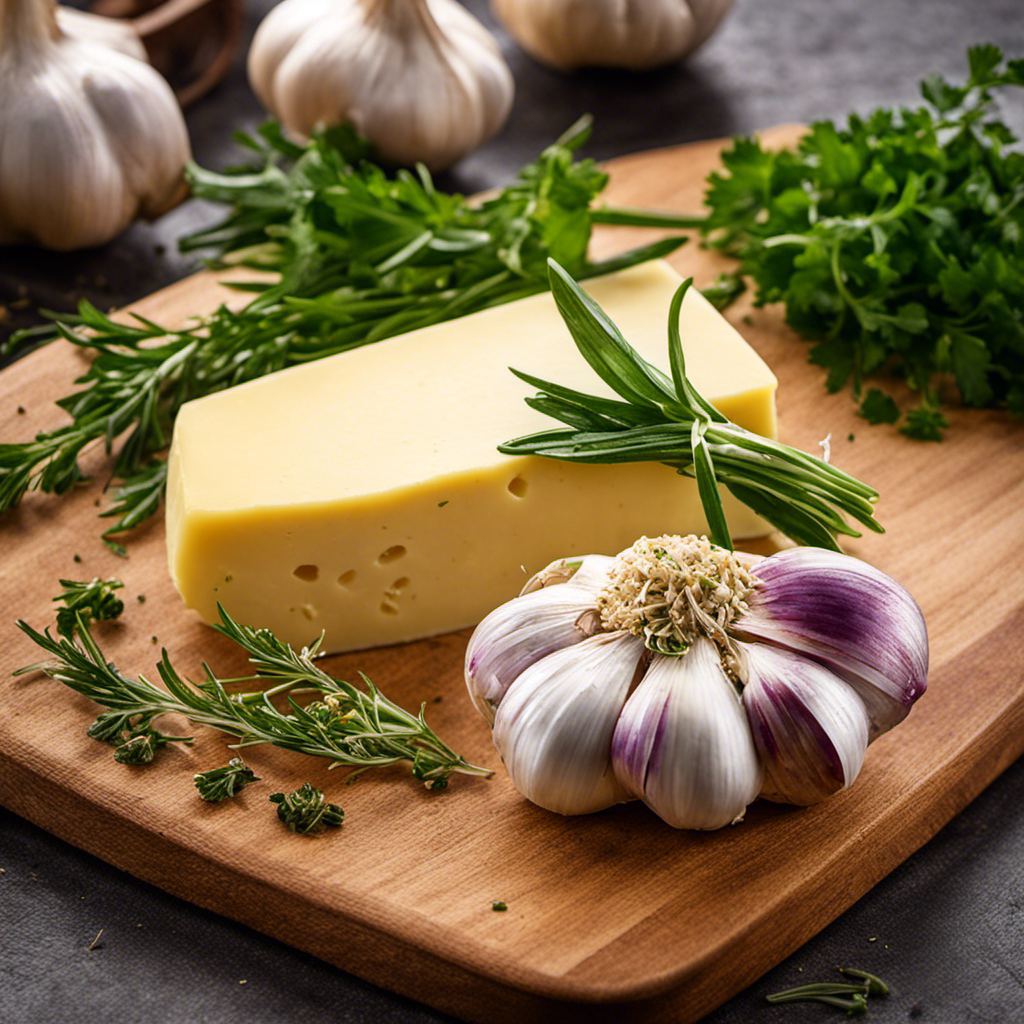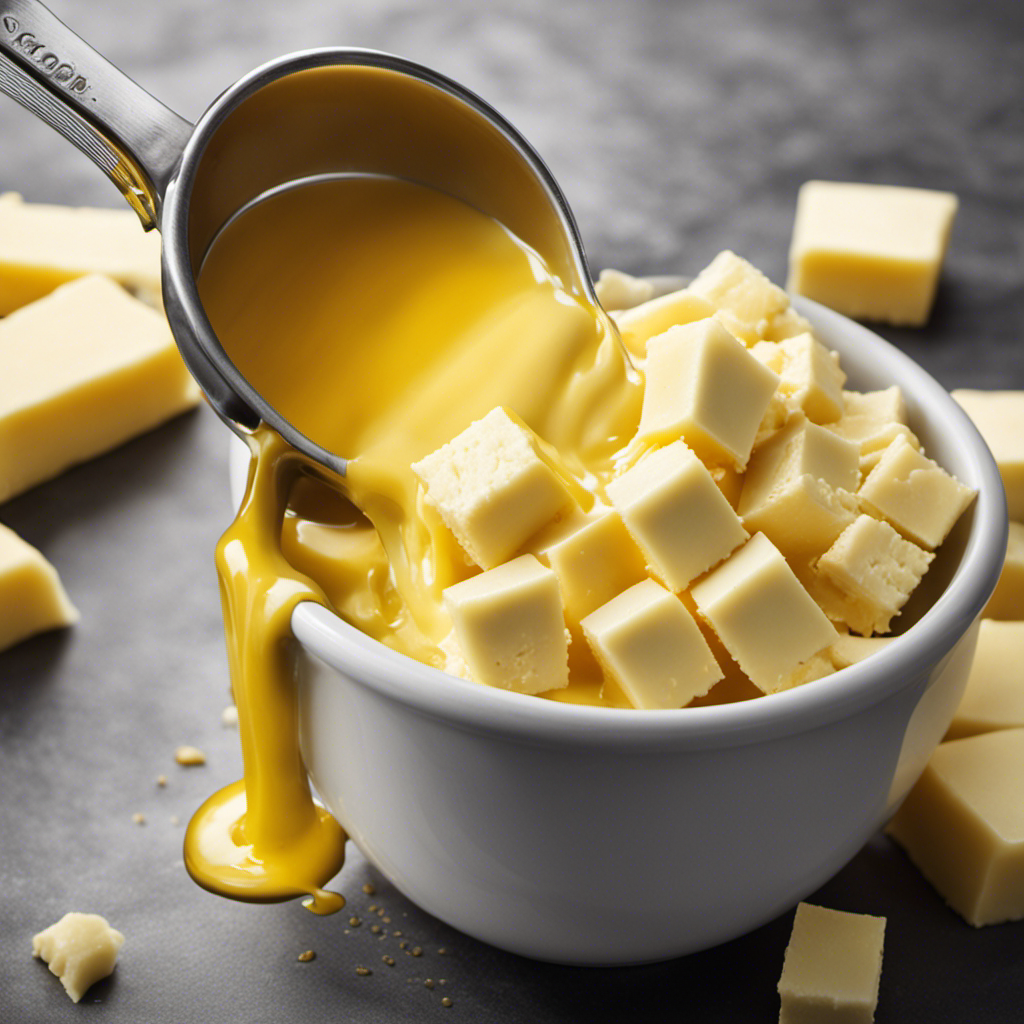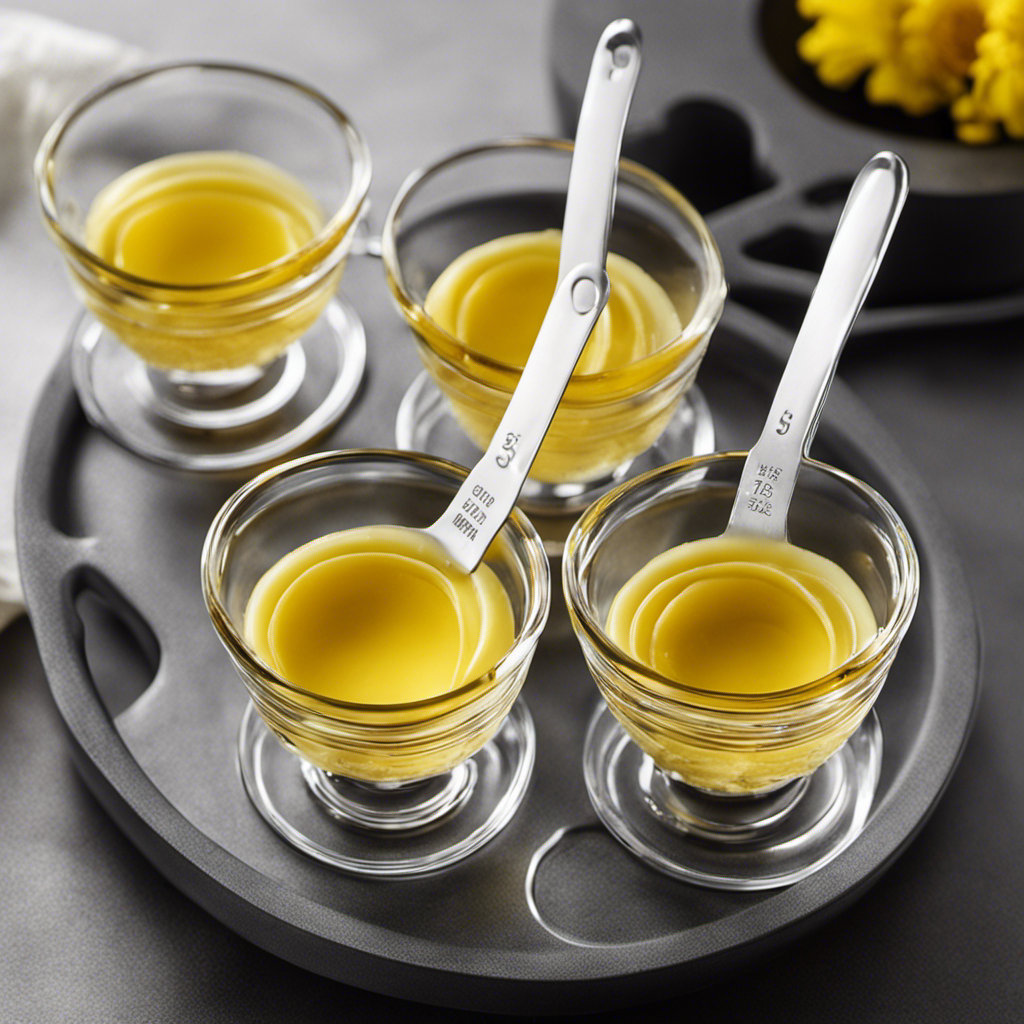As someone who enjoys eating steak, I have always been searching for the perfect, tender steak cooked in butter. However, I consistently encounter one challenge – preventing it from burning.
In this article, I will share my expert tips on how to achieve that luscious, golden crust without scorching your precious cut of meat. From selecting the right steak to basting it with butter, I’ll guide you through each step to ensure a flawless and delicious steak every time.
Key Takeaways
- Use healthier alternatives to butter such as ghee, coconut oil, or other high-temperature cooking oils.
- Melt butter slowly over low heat to prevent browning.
- Clarify butter to remove milk solids with lower smoke point.
- Searing creates a crust and locks in juices.
Choosing the Right Cut of Steak
To choose the right cut of steak, you’ll want to consider factors such as tenderness and marbling. Tenderness refers to how easily the meat can be chewed, and marbling refers to the fat streaks within the muscle.
The more marbling a steak has, the more flavorful and tender it will be. Some popular cuts known for their tenderness and marbling include ribeye, filet mignon, and New York strip.
It’s also important to note that marinating can greatly enhance the tenderness of a steak. By soaking the meat in a flavorful mixture, it helps break down the proteins, resulting in a more tender and juicy final product.
Preparing the Steak for Cooking
When it comes to preparing a steak for cooking, there are three key points to keep in mind: marinating for tenderness, seasoning for flavor, and resting before slicing.
Marinating the steak helps to tenderize the meat by breaking down the connective tissues, resulting in a more juicy and tender steak.
Additionally, seasoning the steak with the right combination of herbs, spices, and salt enhances its flavor profile and adds depth to every bite.
Marinating for Tenderness
First, you’ll want to marinate your steak to achieve maximum tenderness. Marinating is a crucial step in preparing your steak for cooking. There are various marinating techniques that can enhance the flavor and tenderness of your steak.
One common technique is to create a marinade using ingredients like soy sauce, Worcestershire sauce, garlic, and olive oil. Simply combine these ingredients in a bowl, then place your steak in a resealable bag and pour the marinade over it. Allow the steak to marinate in the refrigerator for at least 30 minutes, but preferably overnight for more intense flavor. The marinating time will depend on the thickness of your steak. Thicker cuts may require longer marinating time.
Remember to turn the steak occasionally to ensure even marination.
Seasoning for Flavor
One way to enhance the flavor of your steak is by seasoning it with a blend of herbs and spices. When it comes to grilling techniques, seasoning is essential to bring out the best taste in your steak.
While salt and pepper are classic choices, there are alternative seasonings that can elevate your steak to new heights. For a smoky flavor, try using a blend of paprika, garlic powder, and cayenne pepper. If you prefer a herbaceous taste, a mix of rosemary, thyme, and oregano can do wonders.
Don’t be afraid to experiment with different combinations until you find the perfect seasoning for your steak. Remember, seasoning is an art that can take your grilling skills to the next level and impress your guests with a burst of flavor.
Resting Before Slicing
Resting your steak before slicing allows the juices to redistribute, resulting in a more tender and flavorful piece of meat.
When you cook a steak, the heat causes the juices to move towards the center of the meat. By allowing the steak to rest for a few minutes after cooking, the juices have time to evenly distribute throughout the steak.
This process, known as resting, has several benefits. Firstly, it helps to retain the moisture in the meat, preventing it from becoming dry. Secondly, resting allows the steak to relax, making it more tender and easier to slice.
The ideal resting time for a steak is about 5 to 10 minutes, depending on the thickness. During this time, cover the steak loosely with foil to keep it warm.
Seasoning the Steak
Before seasoning the steak, make sure to pat it dry with a paper towel. This step is crucial as it allows the seasonings to adhere better to the meat’s surface, resulting in a more flavorful and evenly seasoned steak. When it comes to marinating techniques, there are several options to consider. One popular method is to marinate the steak in a mixture of oil, vinegar, and herbs for a few hours before cooking. This helps to tenderize the meat and infuse it with additional flavors. Alternatively, you can also try dry seasoning options such as rubs or spice blends. These can be applied directly to the steak, allowing for a quick and convenient seasoning process. Experiment with different flavors and combinations to find your favorite seasoning method. Remember, proper seasoning is key to enhancing the taste of your steak.
| Marinating Techniques | Alternative Seasoning Options |
|---|---|
| Oil, vinegar, and herb marinade | Dry rubs |
| Soy sauce and ginger marinade | Spice blends |
| Worcestershire sauce and garlic marinade | Citrus zest and herbs |
| Beer and onion marinade | Smoked paprika and cumin |
| Italian dressing marinade | Chili powder and garlic powder |
Preheating the Pan
When preheating the pan, it’s important to ensure that it reaches the desired temperature before adding the steak. This step is crucial in achieving a perfectly cooked steak without burning it.
To create the ideal cooking environment, follow these steps:
- Place a heavy-bottomed pan on the stove over medium-high heat.
- Allow the pan to heat up for a few minutes until it becomes hot to the touch.
- Add a small amount of butter or oil to the pan and let it melt, coating the bottom evenly.
By heating the pan properly, you create a searing surface that locks in the steak’s juices and flavors while preventing it from sticking or burning. The ideal cooking temperature for a steak is around 400°F (200°C), which ensures a nicely seared exterior and a juicy, tender interior.
This step sets the foundation for a delicious steak cooking experience.
Adding Butter to the Pan
When it comes to cooking with butter, temperature control is crucial. Knowing when to add the butter to the pan can make all the difference in achieving a perfect sear or a burnt mess.
Additionally, understanding the differences between butter and other oils can help you make informed choices when cooking.
Lastly, let’s not forget the undeniable flavor enhancement that butter brings to dishes, adding richness and depth that other oils simply can’t match.
Butter Temperature Control
To avoid burning the butter, it’s important to control the temperature. When cooking steak in butter, it’s crucial to melt the butter gently over low heat. This allows the butter to melt evenly without burning. Once melted, you can adjust the heat to your desired cooking temperature.
Here are some butter melting techniques to help you achieve the perfect temperature control:
- Slow and steady: Melt the butter slowly over low heat, giving it time to gradually reach the desired consistency.
- Double boiler method: Place the butter in a heatproof bowl over a pot of simmering water. This indirect heat method ensures gentle melting.
- Microwave method: Cut the butter into small cubes and heat it in short bursts, stirring in between, until melted.
Once the butter is melted, you can use butter basting techniques to infuse the steak with flavor and moisture. Simply spoon the melted butter over the steak while cooking, ensuring every inch is coated. This technique not only adds richness but also helps to prevent the steak from drying out.
With proper butter temperature control and basting techniques, you can achieve a perfectly cooked steak every time.
Butter Vs. Other Oils
Using other oils instead of butter can provide a healthier alternative for cooking. When comparing butter to ghee, ghee is a type of clarified butter that has been simmered to remove milk solids and water content. It has a higher smoke point than regular butter, making it more suitable for high-temperature cooking methods like frying or sautéing.
On the other hand, coconut oil is a popular choice among health-conscious individuals. It contains medium-chain triglycerides (MCTs), which are easily digested and converted into energy by the body. Additionally, coconut oil has a unique flavor profile that can enhance the taste of dishes.
However, it is important to note that while these oils may be healthier alternatives to butter, moderation is key in maintaining a balanced diet.
Butter for Flavor Enhancement
When it comes to cooking steak, using butter can elevate the flavor to new heights. Butter has a rich, creamy taste that adds depth and indulgence to the meat. To ensure that the butter doesn’t burn, it’s important to use proper melting techniques.
Here are a few tips to keep in mind:
- Use unsalted butter for better control over the seasoning.
- Melt the butter slowly over low heat to prevent it from browning too quickly.
- Clarify the butter by removing the milk solids, which have a lower smoke point.
By incorporating butter into your cooking process, you can create delicious butter-based sauces that complement the steak perfectly. These sauces can be infused with herbs, garlic, or even a splash of wine for added complexity.
Now that we’ve explored the wonders of butter, let’s move on to the next step: searing the steak.
Searing the Steak
Start by heating a skillet on high heat to get a nice sear on the steak. Searing is a crucial step in achieving the perfect crust on your steak. It locks in the juices and adds a depth of flavor that cannot be replicated. There are different searing techniques you can employ, such as the traditional stovetop method or using a blowtorch for a more precise sear. Whichever method you choose, the key is to ensure that the skillet is hot enough to create a caramelized crust without overcooking the meat. Here is a table showcasing the searing techniques and their benefits:
| Technique | Benefits |
|---|---|
| Stovetop | Even heat distribution, easy to control |
| Blowtorch | Precise sear, quicker cooking time |
Basting the Steak With Butter
Now that we have successfully seared the steak, it’s time to move on to the next step: basting the steak with butter. This technique involves continuously spooning melted butter over the steak as it cooks. This not only adds flavor but also helps to keep the meat moist and tender.
Here are some key benefits of basting with butter:
-
Enhanced flavor: As the butter melts and coats the steak, it imparts a rich and savory taste that complements the beef perfectly.
-
Improved texture: The butter basting process helps to create a beautiful caramelized crust on the steak, while keeping the inside juicy and tender.
-
Even cooking: By constantly basting the steak with butter, you ensure that it cooks evenly, preventing any dry or overcooked spots.
Checking for Doneness
To check if your steak is done to your liking, simply press your finger against the center of the meat and compare the firmness to the palm of your hand.
This method, known as the finger test, allows you to gauge the doneness of the steak without cutting into it and losing precious juices.
However, for a more accurate measurement, I highly recommend using a meat thermometer to check the internal temperature.
Insert the thermometer into the thickest part of the steak, avoiding any bones or fat.
For a rare steak, aim for an internal temperature of 125°F (52°C), medium-rare at 135°F (57°C), medium at 145°F (63°C), and well-done at 160°F (71°C).
Once you have confirmed the desired doneness, it’s time to let the steak rest and serve it to perfection.
Resting and Serving the Steak
Once you’ve achieved the desired doneness, let the steak rest for a few minutes before serving it. This allows the juices to redistribute and ensures a juicy and tender steak.
When it comes to serving the steak, there are several suggestions and garnishing options that can elevate the dish:
- Serve the steak on a warm plate to maintain its temperature.
- Pair it with a side of roasted vegetables or a fresh salad for a well-balanced meal.
- Drizzle a rich, homemade sauce like a red wine reduction or a creamy peppercorn sauce over the steak for added flavor.
As for garnishing options, here are a few ideas:
- Top the steak with a pat of herb butter for a burst of freshness.
- Sprinkle some freshly chopped parsley or chives over the steak for a pop of color.
- For an elegant touch, garnish with edible flowers like nasturtium or pansies.
Frequently Asked Questions
Can I Use Any Kind of Steak for This Cooking Method?
Yes, you can use any kind of steak for this cooking method. Using butter to cook steak has its benefits, such as adding flavor and helping to achieve a delicious crust without burning.
How Long Should I Let the Steak Rest Before Serving?
I usually let the steak rest for about 5 to 10 minutes before serving. This allows the juices to redistribute and the steak to finish cooking. It’s a crucial step in achieving a perfectly cooked and flavorful steak.
Can I Substitute Butter With a Different Type of Fat?
Sure, you can definitely substitute butter with other types of fat when cooking steak. Some great options include olive oil, avocado oil, or even bacon fat for added flavor. Just be mindful of the cooking method you choose to avoid burning.
What Are the Best Side Dishes to Serve With Steak Cooked in Butter?
When it comes to side dishes for steak cooked in butter, I highly recommend grilled vegetables and creamy mashed potatoes. They complement the rich flavors of the steak and add a delicious variety of textures to the meal.
Should I Cover the Pan With a Lid While Searing the Steak?
No, it’s not necessary to cover the pan with a lid while searing the steak. For the perfect sear, flip the steak only once and resist the temptation to flip it multiple times.
Conclusion
In conclusion, cooking steak in butter without burning is a simple yet delicious way to elevate your steak game. By choosing the right cut of steak, preparing it properly, and adding butter to the pan, you can achieve a mouthwatering, tender steak with a rich buttery flavor.
Don’t be afraid to baste the steak with butter for an extra indulgent touch. Remember to check for doneness and let the steak rest before serving. With these tips, you’ll be enjoying a perfectly cooked steak in no time, making your taste buds dance with joy!
